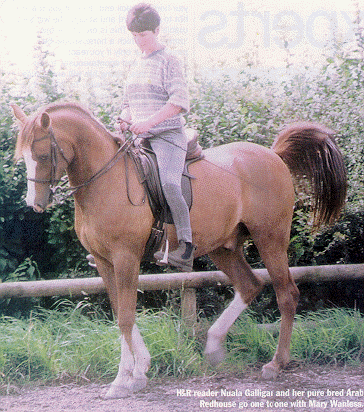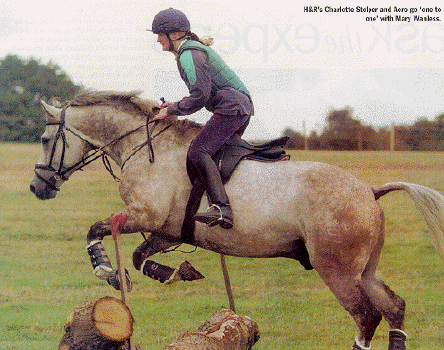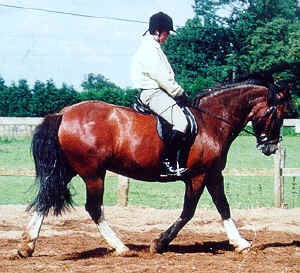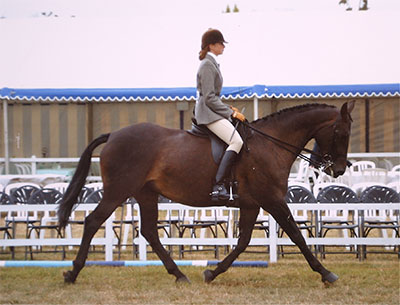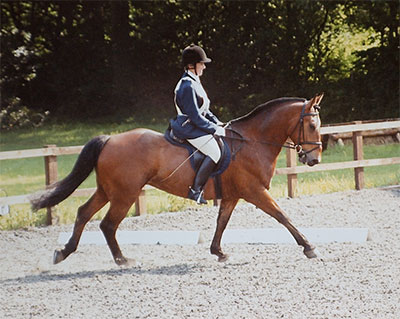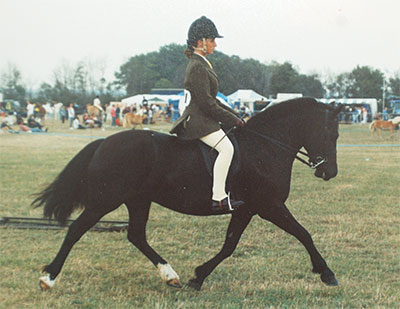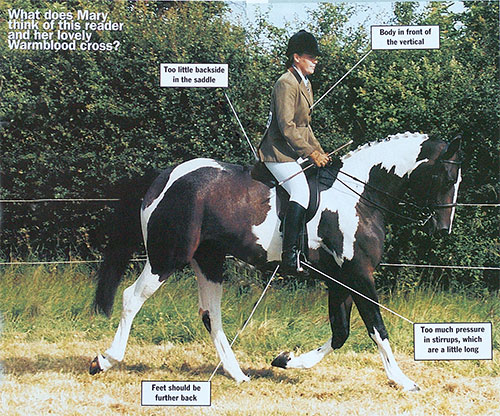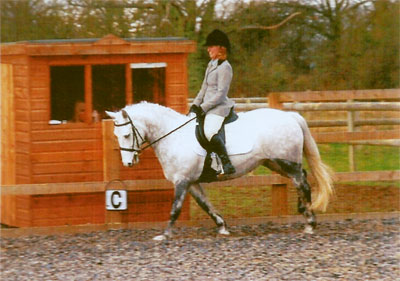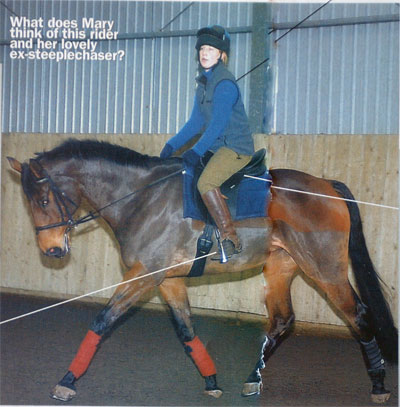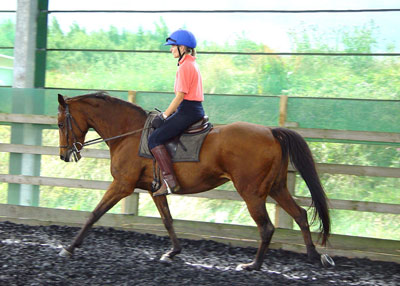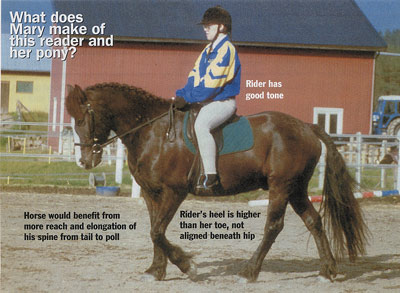RWYM
ARTICLE 2
ARTICLE 2 – RIDER BIOMECHANICS
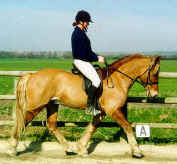 This horse is an eleven year old, 14.1 hand Welsh Cob gelding. His rider has taken him into a lot of unaffiliated shows, and wants to do affiliated competitions. At home she is working him to medium level – he manages most of the lateral movements, and has begun flying changes. According to his rider ‘My horse and I are both fairly untalented but try hard and need all the help we can get!’
This horse is an eleven year old, 14.1 hand Welsh Cob gelding. His rider has taken him into a lot of unaffiliated shows, and wants to do affiliated competitions. At home she is working him to medium level – he manages most of the lateral movements, and has begun flying changes. According to his rider ‘My horse and I are both fairly untalented but try hard and need all the help we can get!’
Despite her beliefs about their lack of talent, he makes an enviable picture, and looks extremely happy in his work. Technically, he should be a little more active, and I think that his hind leg is going to land on the ground behind the hoof print left by the foreleg i.e. he is not quite tracking up. But he shows a nice reach into the rein – although it took me a few minutes of looking at this photograph to realise that the line of his clip looks better than the line of his crest, and his poll is not actually the highest point. He is dangerously close to a ‘swan neck’, with a break in front of the third vertebra, and his rider is going to have to watch out for this tendency. However, it is very nice to see his nose just in front of the vertical, and an open angle under his gullet. So often one sees a scrunched neck, a head which looks overly-big (but only because the neck is scrunched), and a tight ‘V’ shape under the gullet instead of the more open ‘U’ shape that you see here.
As a young BHSAI, I used to bemoan the fact that all the horses I rode seemed to have things wrong with them: they had long backs, and/or short necks, and/or big heads. I despaired of finding a horse who looked like a dressage horse. I also figured that if I ever did, he would surely be beyond my means. It took me about five years for me to discover (through being apprenticed to an extremely good rider) that any horse will look like a dressage horse when he demonstrates the biomechanics of correct movement in his body. This works best, of course, when the rider is also demonstrating the biomechanics of correct riding in her body.
The ‘scrunched neck, big head’ picture is the sillouette of a horse who has been ridden ‘from front to back’. The free neck which reaches and arches out of the wither is the sillouette of a well ridden horse, who has been worked ‘from back to front’ by a rider with no need to pull back on the rein. I watched my mentor transform horses in ways which proved this to me again and again; but it took me a very long time to work out how to turn the ideal that he demonstrated into an achievable reality! Sadly he could not convey to me the basics of good rider biomechanics, since he had little idea how he did what he did.
This rider has had her horse since he was a foal, and I’m sure that she loves him to bits. But I bet she also wishes that he was two hands bigger, and more endowed with what the dressage world considers ‘quality’. For however well he performs, he is unlikely to score as well as a bigger, scopier horse. But part of his value for her is that she is learning to create correct movement in his body without having to deal with the forces generated by the action of a more powerful horse.
About twice a year I come across a horse who I wish I could clone, because he is so good to learn on, presenting just the right kind of challenges to riders at a certain level. He may not be powerful or magnificent, and he may not win, but he is a fantastic training ground – and I think this horse would fall into that elite group. In contrast, I often meet people (especially in America) who bought themselves the classy model without going through this training, and they are unable to work with the issues he presents. They may even have spent a lot of money on a trained horse, only to discover that it is not a case of pressing button B and waiting for the right result.
If you have had the experience of dancing (perhaps in ballroom, jaz dance, or rock and roll) with a really good male partner, you will know that you do not have to know the steps. Instead, it is as if you are danced. I think that this is one of life’s great pleasures – but it comes in striking contrast to dancing with someone who is not so ‘in tune’. Suddenly, it matters that you do not know what to do: you are pushing and your partner is pulling. You are so out-of-synch that the whole experience becomes painful, and you cannot wait to get off the dance floor…..
I think that the woman’s experience in these dance forms mirrors the horse’s experience of being ridden. It can extend from bliss, to endless repetitive hard work, and even to torture. But the most important point is that when the horse is ‘danced’ by a rider who has good rider biomechanics, he does not have to know the steps. But when his rider does not know how to ‘dance’ well, the horse cannot possibly perform as if her were being well ridden – any more than you can perform well on the dance floor when your partner hasn’t ‘got it’. So you cannot buy your way to skilful riding, because your horse (unlike a machine) will find you out.
The story of one of my pupils in Australia illustrates the point well. She spent a fortune on importing a Grand Prix horse from Germany, who had, I think, been well ridden. By the time I met her, his evasive patterns had become extremely difficult to ride. But she had maintained a very philosophical stance. ‘It was worth all that money for the first two weeks.’ she said, still able to raise a smile. I, in contrast, would have been suicidal in the knowledge that I had cramped my dancing partner’s style to such a degree that he was in out and out rebellion.
Let’s come back to our rider and her charming little horse.
She is having a very good effect on him, as evidenced by his sillouette. In her line-up, she is behind the ideal shoulder/hip/heel vertical line, although there is quite a nice line from her elbow through to the horse’s mouth. If we cut the reins, I don’t think she would topple backwards,and in terms of rider biomechanics, this is one of the most important issues. But whilst there is nothing terribly wrong with her position, I suspect that she would come to grief on a more powerful horse, because she is barely matching the forces which his movement exerts on her body. She is certainly not in the position of the classic ‘water-skier’, but she is worryingly close to being towed along.
The saddle may be a significant part of her status quo. Her thigh bone is at about 45 degrees to the ground, as it is in most of the good riders (who set their stirrups a lot shorter than the many riders who are trying for all they’re worth to ‘stretch their legs down’). You can see that her knee lies against the front of the saddle flap whilst her backside is, of necessity, right up against the cantle. Her saddle is not big enough to accomodate the length between these points. Furthermore, it appears to have a seat that slopes back towards a cantle which then rises steeply. This set-up makes it much harder for her to find and maintain good rider biomechanics.
This mirrors the shape of a Western saddle, and makes it very hard for the rider to sit anywhere but against the cantle. The net result is that the cantle becomes a prop, stopping the rider from bumping backwards and giving her the illusion that she can sit. (You might argue that the saddlery trade, in creating these designs, has catered to needs of the mass market of riders who are in desperate need of help!) A saddle with a flatter longer seat which gave the rider space behind her backside might prove much harder for her to sit in, but it would issue an ultimatum which might encourage her to increase her muscle tone and upgrade her skills in search of good rider biomechanics.
It is also worth noting that the saddle does not look great on the horse. It is positioned very close to his wither, and looks as if it sits off the top of him instead of being part of him. It looks short for the horse as well as for the rider, and I think he would carry her more easily if the saddle offered a greater weight bearing area.
My final suggestions to our rider are these: consider changing your saddle, but be careful that you do not go out of the frying pan and into the fire. Learn more about the baselines of good rider biomechanics, espceially bearing down, and pushing forward from your back, so that you absolutely know that you are being causal, and are not being towed along. There is more about this in both previous articles, and in next month’s offering. Keep in mind that your horse is the training school through which you seek to learn the skills that will, over time, enable you to ride a more powerful horse. This means that you need to bite the bullet now rather than later: resist the temptation to just cruise along – which you can do fairly well on his degree of power. Instead, begin building your skills in a progressive way so that you are well prepared for the future.


